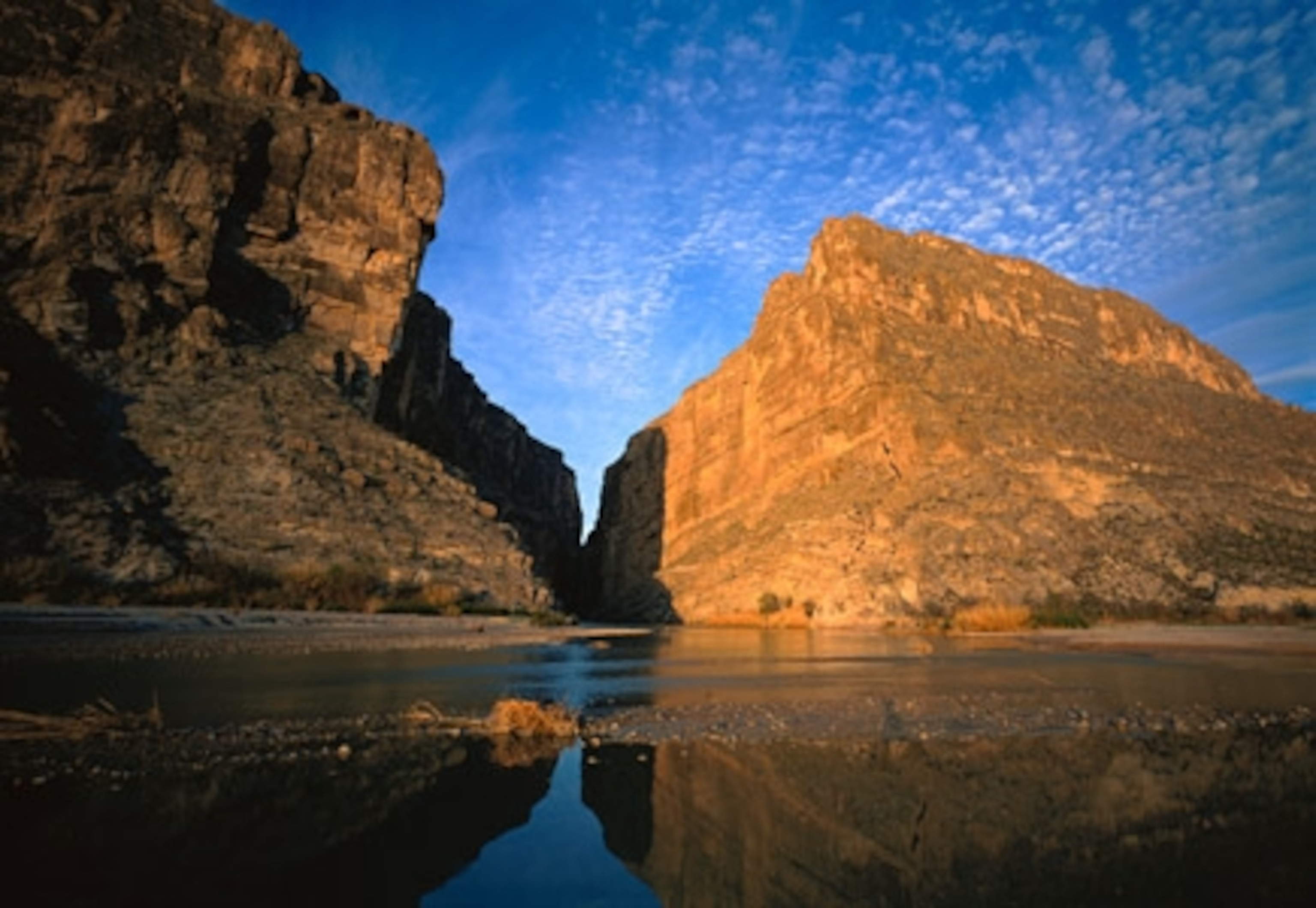
How Not to Die in the Desert
It’s been a while since I’ve had a Tina Fey travel moment (“I Want to Go to There”) but the combination of danger, beauty, and the sheer isolation that Big Bend National Park offers has me dreaming of nights spent under an ocean of stars. The park stretches over 800,000 acres along the twist of the Rio Grande in southwest Texas, and offers amazing hiking, incredible vistas, and a significant adventure factor that has the potential to bring out the Bear Grylls in each of us. So much so that National Geographic writer Nick Patosi introduces what is perhaps the counterpoint to the “IWTGTT” impulse — the “You Can Die” factor. He writes in the February 2007 issue:
The You Can Die possibilities are endless, which keeps some visitors–350,000 a year to Big Bend National Park–from coming back.
Those who do return are left to ponder the remarkable grit of the hardy few who have managed to survive in this spare, unforgiving environment.
Not to mention the roadrunners and kangaroo rats, so adapted to the arid climate they don’t even need to drink.
Fortunately for all of us, the National Park System has prepared a short list of ways to counter the “You Can Die” factor, aptly called “How Not to Die in the Desert.” Check them out after the jump.
Talk to park staff. Find out about road and trail conditions, get trip advice, and buy the maps and guidebooks you need.
Check the weather forecast, too.
Let someone know where you’re going. Call family or friends at home to let them know your plans. Tell the camp hosts in the campground. Leave a note on your car stating where you’re going hiking and when you expect to return.
Make sure your vehicle is in good condition and has a spare tire, a working jack, and other emergency equipment. Take extra water, food, and sleeping bags just in case. If you’re on foot, make sure all of your hiking and camping gear is in good shape.
If your vehicle breaks down or gets stuck, stay with it! It is much easier for rangers to find a car on a road than a person walking through the desert.
Know how to signal for help. Cell phones may not work in the park, so don’t count on being able to call out. Whistles, air horns, mirrors, and flares are all good attention-getters. While wood fires are not normally permitted in the park, they can be an effective signaling method of last resort, since the smoke can be seen for miles and will certainly get the attention of park rangers.
Another tip for the park (it won’t necessarily save your life, but it might save you some stress): As of June 3, travel restrictions from the Department of Homeland Security now state that people taking float trips on the Rio Grande may be required to have proper identification when stopped by border personnel. That can be in the form of a passport, U.S. passport card, or a few other forms of ID, and these rules are in place due to the fact that the river is considered an international border and those on float trips are considered to have left and re-entered the country. So don’t be dumb and make your “IWTGTT” trip into a “You Can Die… or Be Jailed” situation.
For more on the park, check out our Texas Borderlands Drive of a Lifetime. Photo by Panoramic Images/Getty Images.
- National Geographic Expeditions
